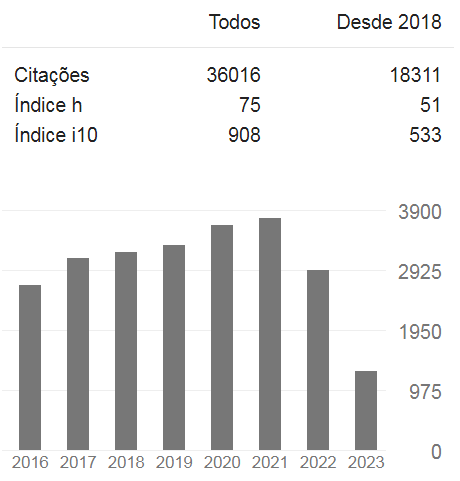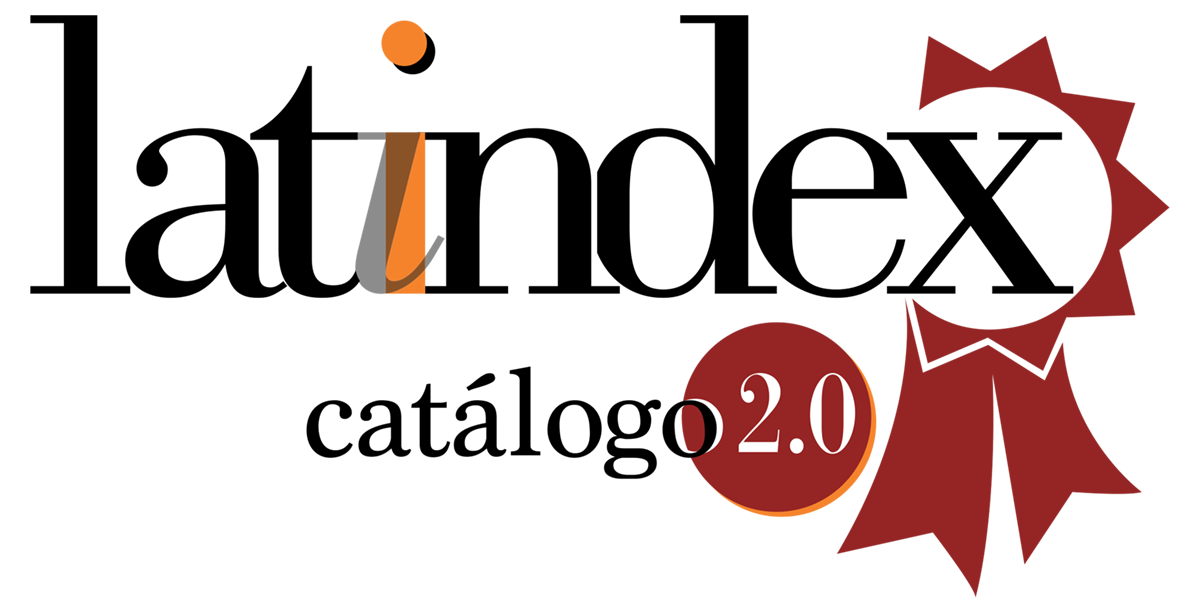Patients with primary total hip arthroplasty
feelings experienced
DOI:
https://doi.org/10.5935/1415-2762.20140058Keywords:
Arthroplasty, Replacement, Hip, Fear, Nursing Care, EmotionsAbstract
The objective of this research was to understand the feelings and changes experienced by patients who underwent primary total hip arthroplasty. It is an exploratory study with a qualitative approach. For the selection of the study population, a preliminary survey was conducted in the technical informatics core of all patients who underwent a primary total hip arthroplasty (PTHA) due to osteoarticular fractures of the hip and femoral neck, from January of 2007 to December of 2008; and who have been and /or were followed up at the ambulatory clinic during the same period, totaling 36 patients. Data collection occurred from January of 2009 to June of 2009. The interviews were audio recorded, using a semi-structured guide, and applying the criteria of intentional sampling for the selection of interviewees, suspending it when no more new information was contributed (saturation technique). Thus, it reached 14 respondents. The data were submitted to a content analysis technique proposed by Bardin, resulting in two categories: "fear of losing the leg after surgery, or of having a prosthesis rejection and subsequent falls" and "dependence for care". Regarding the first category, individuals reported their fear of losing physical mobility, locomotion and experiencing subsequent falls; regarding the second category, the concern of becoming incapable was highlighted. The study results demonstrated that such feelings could be alleviated if these patients were better oriented in the pre- and post-operative periods, and if nursing professionals were attentive to the feelings mentioned.References
1. Harkess JW, Crockarell JR. Arthroplasty of the hip. In: Canale ST, Beaty JH, editors. Campbell’s operative orthopaedics. 13ª ed. Philadelphia: Elsevier;
2013. p. 158-300.
2. Schwartsmann CR, Boschin LC. Quadril do adulto. In: Hebert S, Xavier R,
Pardini Júnior AG, Barros Filho TEP, organizadores. Ortopedia e traumatologia:
princípios e prática. 4ª ed. Porto Alegre: Artmed; 2009. p. 407- 42.
3. Dabov G, Perez E. Transtornos não-traumáticos diversos. In: Canale ST, editor.
Cirurgia ortopédica de Campbell. 10ª ed. Barueri: Manole; 2006. p. 905-62.
4. Brasil. Ministério da Saúde. DATASUS. Informações de saúde. Brasilia:
Ministério da Saúde; 2009. [Citado em 2009 ago. 10]. Disponível em: http://
www.datasus.gov.br/DATASUS/index.php?area=02
5. Nigussie S, Belachew T, Wolancho W. Predictors of preoperative anxiety among
surgical patients in Jimma University Specialized Teaching Hospital, South
Western Ethiopia. BMC Surg. 2014; 14(67). [Citado em 2014 ago 20]. Disponível
em: http://www.biomedcentral.com/content/pdf/1471-2482-14-67.pdf
6. Martins JJ, Schneider DG, Bunn KR, Goulart CA, Silva RM, Gama FO. A
percepção da equipe de saúde e do idoso hospitalizado em relação ao
cuidado humanizado. ACM Arq Catarin Med. 2008; 37(1):30-7.
7. Granziera E, Guglieri I, Del Bianco P, Capovilla E, Dona’ B, Ciccarese AA, et al.
A multidisciplinary approach to improve preoperative understanding and
reduce anxiety: a randomised study. Eur J Anaesthesiol. 2013; 30(12):734-42.
8. Camponogara S, Soares SGA, Silveira M, Viero CM, Barros CS, Cielo C.
Percepção de pacientes sobre o período pré-operatório de cirurgia cardíaca.
REME - Rev Min Enferm. 2012; 16(3):382-90.
9. Lisboa GCF, Maimoni AO, Santos V, Llapa REO. Stress factors for patients
undergoing cardiac surgery. Invest Educ Enferm. 2012; 30(3):312-9.10. Turk DC, Burwinkle TM. Assessment of chronic pain in rehabilitation:
outcomes measures in clinical trials and clinical practice. Rehabil Psychol.
2005; 50(1):56-64.
11. Lavernia CJ, Alcero JC, Rossi MD. Fear in arthroplasty surgey: the role of race.
Clin Orthop Relat Res. 2010; 468:547-54.
12. Sjöstedt L, Hellström R, Stomberg MW. Patients’ need for information prior
to colonic surgery. Gastroenterol Nurs. 2011; 34(5):390-7.
13. Pontes AC, Leitão IMTA, Ramos IC. Comunicação terapêutica em enfermagem:
instrumento essencial do cuidado. Rev Bras Enferm. 2008; 61(3):312-8.
14. Fontanella BJB, Ricas T, Turato ER. Amostragem por saturação em pesquisas
qualitativas em saúde: contribuições teóricas. Cad Saúde Pública. 2008;
24(1):17-27.
15. Bardin L. Análise de conteúdo. Lisboa: Edições 70; 2003.
16. Cameron LE, Araújo STC. Visão como instrumento da percepção na
assistência em enfermagem traumato-ortopédica. Rev Esc Enferm USP. 2011;
45(1):95-9.
17. Mayle AM, Bruna SO, Kalianny QM, Denise MT, Álvaro CCM. A velocidade
da marcha pode identificar idosos com medo de cair? Rev Bras Geriatr
Gerontol. 2013; 16(1):71-80.
18. Lima RS, Campos MLP. Perfil do idoso vítima de trauma atendido em uma
unidade de urgência e emergência. Rev Esc Enferm USP. 2011; 45(3):659-64.
19. Nagai K, Ikutomo H, Yamada M, Tsuboyama T, Masuhara K. Fear of falling
during activities of daily living after total hip arthroplasty in Japanese women:
a cross-sectional study. Physiotherapy. 2014; 100(4):325-30.
20. Visschedijk JH, Caljouw MA, Van BR, Hertogh CM, Achterberg WP. Fear of
falling after hip fracture in vulnerable older persons rehabilitating in a skilled
nursing facility. J Rehabil Med. 2014; 46(3):258-63.
21. Danielle LA, Ione JCS, Tânia RBB, Eleonora O. Medo de queda recorrente
e fatores associados em idosos de Florianópolis, Santa Catarina, Brasil. Cad
Saúde Pública. 2013; 29(4):758-68.
22. Pavarini SCI, Neri AL. Compreendendo dependência, independência e
autonomia no contexto domiciliar: conceitos, atitudes e comportamentos.
In: Duarte YAO, Diogo MJD, coordenadores. Atendimento domiciliar: um
enfoque gerontológico. São Paulo: Atheneu; 2006. p.49-70.
23. Almeida MA, Seganfredo DH, Canto DF, Menna Barreto LN. Aplicabilidade
da classificação dos resultados de enfermagem em pacientes com déficit no
autocuidado: banho/higiene. Rev Gaúch Enferm. 2010; 31(1):33-40.
24. Demir SG, Erdil F. Effectiveness of home monitoring according to the model of
living in hip replacement surgery patients. J Clin Nurs. 2013; 22(9-10):1226-41.
25. Joelsson M, Olsson LE, Jakobsson. Patients`experience of pain and relief
following hip replacement surgery. J Clin Nurs. 2010; 19(19-20):2832-8.
Downloads
Published
Issue
Section
License
Copyright (c) 2014 Reme: Revista Mineira de Enfermagem

This work is licensed under a Creative Commons Attribution 4.0 International License.






































